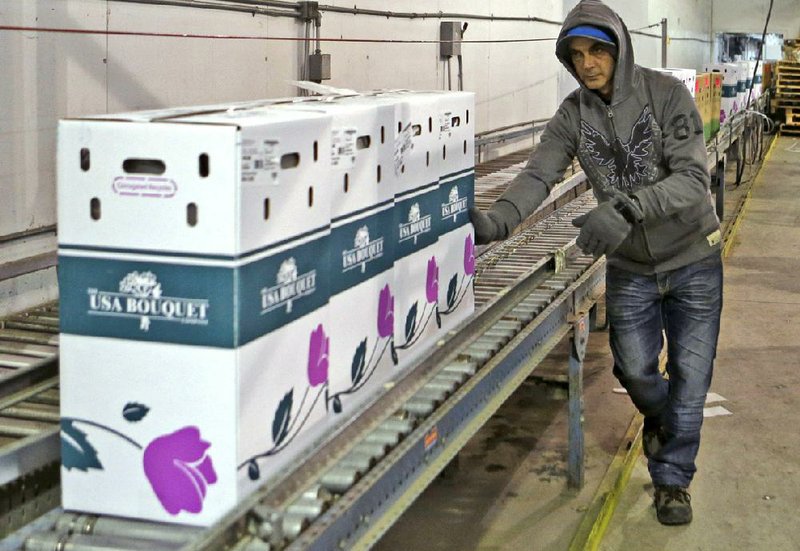Sales at U.S. retailers rose in February by the most in five months as an improved job market and stronger household finances cushioned the effect of higher payroll taxes.
The 1.1 percent advance comes after a revised 0.2 percent gain in January, the Commerce Department said. Sales excluding the volatile categories of autos and gasoline rose 0.4 percent.
Progress in the job market is shoring up sentiment and spurring demand at merchants, easing the burden of a two percentage-point increase in the levy that funds Social Security. The boost to household wealth from home values and stock prices has also helped consumers maintain spending in the face of higher fuel prices.
“It shows some steady underlying strength,” said Terry Sheehan, an economic analyst at Stone & McCarthy Research in Princeton, N.J. “These numbers are cause for cautious optimism.”
Eight of 13 major categories showed increases last month, led by a 5 percent jump in receipts at gasoline stations that reflected higher fuel prices. Sales also climbed at building materials outlets, auto dealers and general merchandise stores.
Spending increased 1.1 percent at auto dealerships in February after a 0.3 percent drop a month earlier.
Pent-up demand for motor vehicles contributed to the increase as an aging fleet and cheap borrowing drew customers to dealer lots. Cars and light trucks sold at a faster pace in February, pushing the annualized rate of sales to 15.3 million from 14.4 million a year ago, according to data from Ward’s Automotive Group.
Deliveries at Ford Motor Co. surged 9.3 percent last month from a year earlier, the best February in six years. At General Motors Co., sales climbed 7.2 percent, the companies reported March 1.
The gain in February receipts at service stations was the biggest since August and occurred after a 0.7 percent advance in January. Regular gasoline at the pump averaged $3.67 a gallon in February, up from $3.32 the prior month. The Commerce Department’s retail sales figures aren’t adjusted for inflation.
Spending increased 0.2 percent at clothing chains and 0.5 percent at general merchandise stores, which was the most in almost a year, Wednesday’s report showed. Nonstore retailers saw a 1.6 percent gain in purchases.
Sales excluding autos, gasoline and building materials - the figures used to calculate gross domestic product - climbed 0.4 percent after a 0.3 percent increase in the previous month.
Gains in demand weren’t universal, as department store receipts fell 1 percent in February. Same-store sales for 20 companies tracked by Retail Metrics Inc. rose 1.9 percent in February compared with a year ago, less than the 2.5 percent forecast. Sales at six of 12 chains reported gains.
Retailers took on almost 24,000 new employees last month, contributing to a 236,000 increase in payrolls that exceeded the median forecast of economists surveyed, figures from the Labor Department showed last week. The unemployment rate unexpectedly dropped toa four-year low of 7.7 percent.
The pickup in hiring defied concern that budget battles in Washington would hurt the economic expansion.
A fiscal pact passed by Congress on Jan. 1 gave a permanent tax break to 99 percent of Americans while allowing a payroll tax used to finance Social Security to return to 6.2 percent from 4.2 percent. A worker earning $50,000 a year is taking home about $83 less a month because of the higher levy.
Some discount and department-store retailers including Wal-Mart Stores Inc. have struggled to increase sales as the tax increase and delayed tax returns take a toll.Wal-Mart, the world’s largest retailer, said Feb. 21 that same store sales in the first quarter will be little changed. Target Corp., the second-largest U.S. discount chain, said February sales got off to a slow start.
Inventories in the U.S. rose 1 percent in January as companies replenished warehouses and shelves amid signs demand will pick up, a separate Commerce Department report said Wednesday.
Businesses are restocking after a cutback in the pace of inventory building in the fourth quarter that weighed on economic growth. Progress in the labor market is sustaining consumer spending as companies invest in new equipment, a sign factory orders may pick up.
“As evidence grew that consumer demand had momentum, businesses had to catch up again” after the slowdown in inventory growth at the end of 2013, Sam Coffin, an economist for UBS Securities LLC in Stamford, Con., said before the report. “Household spending has been moving along at a decent clip.” Information for this article was contributed by Ainhoa Goyeneche and Michelle Jamrisko of Bloomberg News
Business, Pages 27 on 03/14/2013
